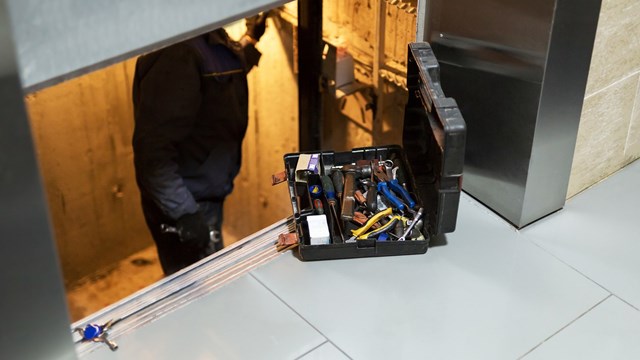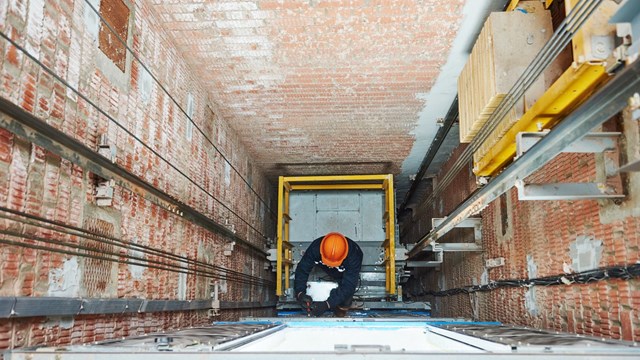Some buildings have lush reserve funds and the most pressing challenge in building maintenance involves new balustrades or landmark accents.
But for most co-op and condo managers in New York, building maintenance is less predictable. It quickly becomes a juggling act or game of whack-a-mole. The good news is that proper focus can change that through daily vigilance and changeable prioritization involving projects you can afford, projects that are urgent and projects to be deferred.
Topping the list of course ought to be any condition that threatens the health or safety of residents. If a project involves aesthetics, you may be able to postpone maintenance, but structural elements require more immediate attention. Still, these decisions are always nuanced. An outdated lobby can diminish the building’s perceived value. Structural deficiencies might lead to an emergency situation if neglected too long. Striking the right balance requires a clear understanding of the overall condition of your building as well as the expectations of shareholders.
As a general rule, perform maintenance projects—inspections of elevators, sprinklers, HVAC systems, etc.--on a rotating basis to keep the building running efficiently. And never overlook opportunities to execute preventative fixes during scheduled renovations.
If window installs are due, make sure your waterproofing is intact and inspect the condition of the surrounding support steel. Once, during a renovation on Riverside Drive, while the plumbing was exposed we decided to look at the riser pipes, usually not in great condition in older buildings. If riser pipes break, they can cause significant and costly water damage. Sure enough, we spotted a problem with a faulty riser, brought it to the building’s attention, and it was repaired at little additional cost, eliminating the need (and much larger cost) to tear open the walls again later.
Face Value
As every building manager knows, Local Law 11 mandates façade inspection of buildings six stories or taller every five years by New York State licensed engineers. Co-op managers complete these inspections because they’re required to, but sometimes at the cost of more pressing maintenance issues. Staying in compliance often means delaying repairs or employing quick, less expensive fixes.
Instead of postponing repairs, have your superintendent and employees perform routine visual inspections of the exterior of the property. Observe the windows, parapets, fire escapes and balconies and check for loose bricks or shifted stones on the façade and foundation. Repairing even small deficiencies in between routine inspections can save you time and money down the line. If you’re sealing structural cracks as they appear you’ll prevent water from seeping into the building and causing all kinds of headaches. Water intrusion can lead to mold and pest problems and over time can even compromise a building’s structural integrity. So it’s worth it to eyeball your building’s envelope regularly to ensure all components are properly intact.
Up on the Roof
A roof should last 15 to 25 years depending on upkeep, weather and roofing material used. Up there, fluctuating temperatures often cause trouble. Without proper maintenance, even a minor problem can be costly.
After a rainstorm, inspect the roof for standing water. We can’t emphasize this enough: Water is not your building’s friend and the roof is no exception. Roofs can’t hide from rain and snow but sometimes you can easily change a roof’s pitch to facilitate better drainage.
Equally important is keeping your building’s gutters and roof drains clear. We once witnessed a building’s roof drains after a bad storm blew through. Since the drains hadn’t been properly maintained the storm overwhelmed the clogged drains and dumped quite a bit of water into building. A functioning drain could’ve easily prevented this unnecessary and costly event.
Another option is a green rooftop engineered to support grass and plant life. Initially regarded as luxury for environmentally conscious New Yorkers, green roofs are now being recognized as an energy-efficient, cost-saving amenity. Advocates say they reduce cooling and heating loads and also capture storm-water runoff that otherwise may overflow sewers. The City of New York offers a tax abatement through March 15, 2018 for green roofs for $4.50 per square foot up to $100,000.
Safe Sidewalks and Streetscapes
In New York City, all property owners are liable for maintaining the sidewalks in front of their property. This includes reconstruction, repair or replacement of defective sidewalks as well as the removal of snow, ice or dirt or any debris that obstructs passage.
If you have trees out front, you’ve probably tangled with those gawky tree roots that are always threatening to uproot the sidewalk. The city doesn’t allow root cutting but one way you can deal with this issue is to widen the tree box. As long as you keep the city’s mandated four-to-six feet between the tree box and the building, you’ll provide ample growing space for tree roots and have few worries about broken sidewalks created by trees expanding underground.
In the event of an uneven sidewalk, inexpensive concrete grinders can file down the pathway and allow safe passage for residents and passersby—a simple courtesy to New Yorkers who seem these days incessantly staring down at their smartphones.
The Lobby: Small Changes, Big Savings
If your lobby has lost some of its luster but a complete overhaul isn’t possible, simple changes can make a big difference in ambiance. If the temperature in your lobby feels drafty, shore up weather stripping to seal in a more comfortable atmosphere. For lighting, switch to LED bulbs if you haven’t already. The initial cost is higher but the bulbs last thousands of hours and require less wattage and electricity. Just be sure to confirm the new bulbs are compatible with your existing switches.
Small touches can make all the difference in maintaining your building without breaking the budget. In fact, small things help shareholders see that their investment is in excellent shape and cared for in a way that maximizes long-term value. During lobby renovations on the Upper East Side, we opened a rear wall, exposing the courtyard and adding natural light. To enhance the décor, pre-fab plaster crown moldings, Terrazzo tiles and marble walls were installed. Durable and cost effective, they still added a touch of old world sophistication. The piece de resistance was a pair of exquisite bronze front doors that now greets residents (and potential buyers) every time they enter the building.
Peter Di Natale is the president of Peter Di Natale & Associates, Inc., a full-service general contracting and construction management firm in New York. For more information please visit www.dinataleassociates.com.







Leave a Comment